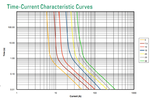kathmandu
Full Member level 5

Hello,
I need your help to investigate a recent Mosfet death.
It was one of the four paralleled Mosfets of a H-bridge high-side switch (sine wave inverter).
The Mosfet was rated at 130A (thus the paralleled group was rated at 520A), the load current was lower than 50A and I had an inline fuse (automotive type) of 90A (three 30A ones in parallel).
It seems like the Mosfet died short then the fuse has blown.
Anyway, there was no smell & smoke (there was absolutely no visible sign of damage).
Like I've just mentioned above, the drain-source jonction was dead short and I could measure a gate-source resistance (using a multimeter) of 30ohm.
Could anyone explain the cause of death?
The paralleled Mosfets were mounted on the same heatsink so I doubt there was any thermal unballance.
The Mosfet was rated at 200V, the DC link voltage was 24V and I had some 5kW TVS diodes (110V) across that DC link, too.
Could have been a manufacturing issue? Btw, I'm pretty sure it was a genuine part (sourced from Mouser).
Any other ideas?
I need your help to investigate a recent Mosfet death.
It was one of the four paralleled Mosfets of a H-bridge high-side switch (sine wave inverter).
The Mosfet was rated at 130A (thus the paralleled group was rated at 520A), the load current was lower than 50A and I had an inline fuse (automotive type) of 90A (three 30A ones in parallel).
It seems like the Mosfet died short then the fuse has blown.
Anyway, there was no smell & smoke (there was absolutely no visible sign of damage).
Like I've just mentioned above, the drain-source jonction was dead short and I could measure a gate-source resistance (using a multimeter) of 30ohm.
Could anyone explain the cause of death?
The paralleled Mosfets were mounted on the same heatsink so I doubt there was any thermal unballance.
The Mosfet was rated at 200V, the DC link voltage was 24V and I had some 5kW TVS diodes (110V) across that DC link, too.
Could have been a manufacturing issue? Btw, I'm pretty sure it was a genuine part (sourced from Mouser).
Any other ideas?



